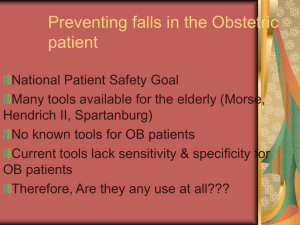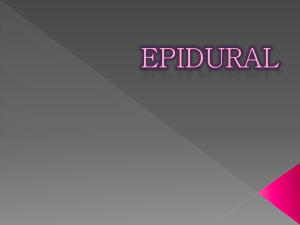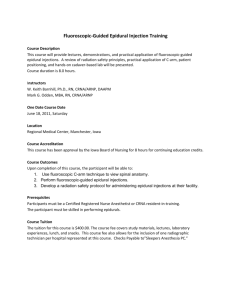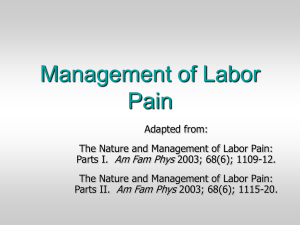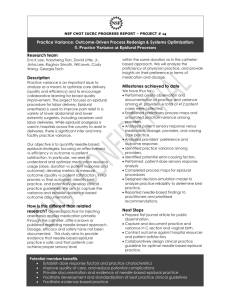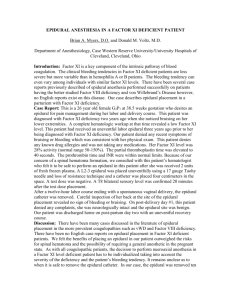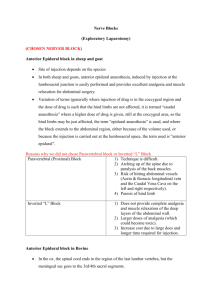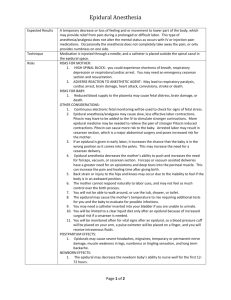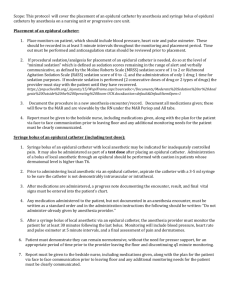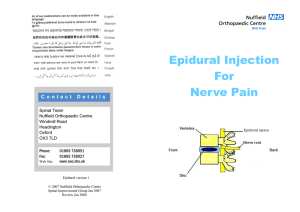Pain Relief During Labour
advertisement
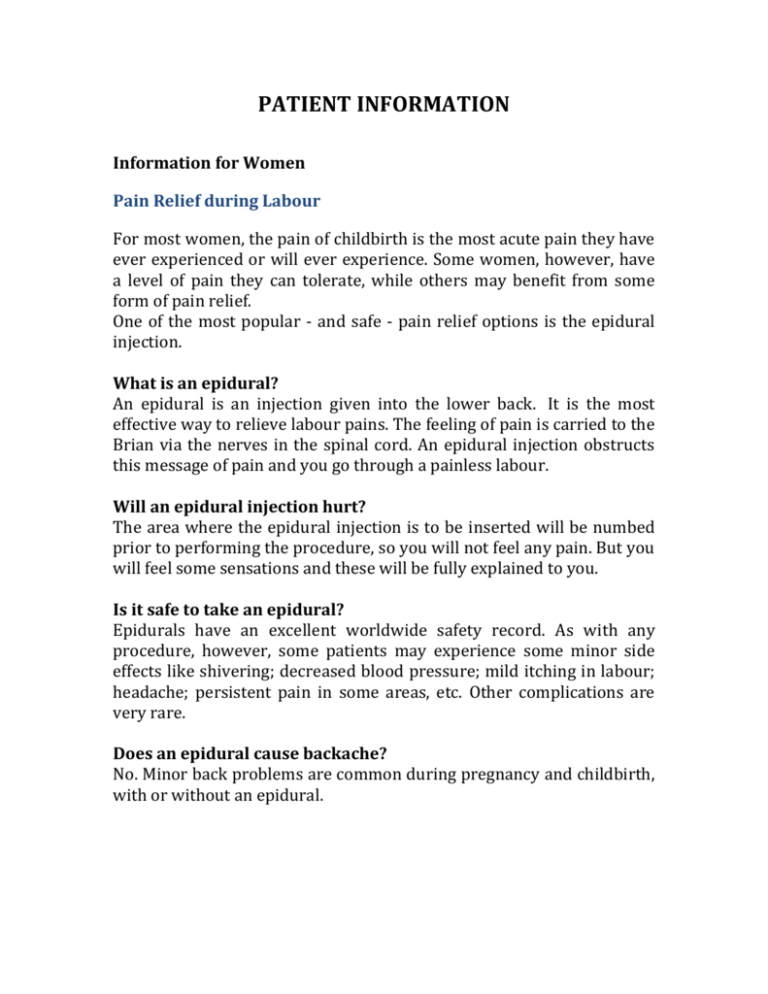
PATIENT INFORMATION Information for Women Pain Relief during Labour For most women, the pain of childbirth is the most acute pain they have ever experienced or will ever experience. Some women, however, have a level of pain they can tolerate, while others may benefit from some form of pain relief. One of the most popular - and safe - pain relief options is the epidural injection. What is an epidural? An epidural is an injection given into the lower back. It is the most effective way to relieve labour pains. The feeling of pain is carried to the Brian via the nerves in the spinal cord. An epidural injection obstructs this message of pain and you go through a painless labour. Will an epidural injection hurt? The area where the epidural injection is to be inserted will be numbed prior to performing the procedure, so you will not feel any pain. But you will feel some sensations and these will be fully explained to you. Is it safe to take an epidural? Epidurals have an excellent worldwide safety record. As with any procedure, however, some patients may experience some minor side effects like shivering; decreased blood pressure; mild itching in labour; headache; persistent pain in some areas, etc. Other complications are very rare. Does an epidural cause backache? No. Minor back problems are common during pregnancy and childbirth, with or without an epidural. Do epidurals result in C. sections? No. The chances of a normal delivery before or after the procedure are the same. There is sufficient data to prove that an epidural will not lead to an increased rate of C. section. If I have to subsequently undergo a C-section, will the epidural catheter be removed? No. The same catheter will be used to administer anaesthesia. However, the concentration of the drug used will be higher to minimize discomfort during surgery. The same catheter will be retained for 48hours after your surgery to administer pain relieving medications, thus reducing your pain and discomfort even in the post operative period. Will the epidural harm my baby? No, not at all. A properly administered epidural improves blood supply to your baby and is especially helpful to mothers who have small babies or those with preterm labour. Another benefit is that when the mother is pain-free, she can cooperate with the obstetrician and help make the birth process quicker. Is an epidural procedure safe for mothers with hypertension / heart or lung disease? Epidural is the technique of choice and is highly recommended for mothers with this problem. Good pain relief will not only reduce the stress on the heart but will also improve oxygenation of both mother and baby, thus reducing stress on the heart and lungs. Can I walk after an epidural? Yes. All epidurals at this hospital are given using low dose mixtures of local anaesthetics or narcotics which preserve the motor power of your legs. In fact, if there is no maternal or fetal contraindication, the labour ward nurse will encourage you to walk after an epidural. Are there any contraindications? Yes, there are a few. Epidurals and spinals are contraindicated in mothers who have clotting problems or infection at the insertion site. If necessary, your anesthetist will do certain blood tests before performing the procedure. Such cases, however, will be given some other form of pain relief. Other Methods of Pain Relief Although an epidural injection is the most popular mode of labour analgesia, there are other forms of pain relief which may be used under various clinical conditions. Injectable Medications In this method, women are given medications either by intramuscular or intravenous route to produce relief of pain. The dosage used is quite safe for mother and baby, but occasionally some mothers may be drowsy and may have shallow respiration. Some babies may have similar problems too, but these can be easily diagnosed and treated. Others side effects are nausea and vomiting, which can also be easily treated. Tens TENS stands for transcutaneous electrical nerve stimulation. It requires the placement of four electrodes. A low intensity current is passed through these electrodes by a battery operated device. This is entirely controlled by the patient, who will be taught how to use it. The advantage of this method is that it has no side effects, and the pain relief is average. Entonox It’s a mixture of oxygen and nitrous oxide gas administered through a face mask during labour. It is of use particularly in women who have short labour. Eg: during their 2nd or 3rd delivery. Post- Operative Pain Relief We believe that it is not enough to keep you pain-free only while the procedure is in progress. It is equally important to keep you as possible afterwards as well. With this in mind, the anaesthetists at Fernandez Hospital run a pain management service. Good pain control enables you to recover quickly, even after major surgery, thereby reducing your stay in hospital. There are several ways of providing pain relief. PCA – Patient Controlled Anaesthesia The PCA machine allows you to give yourself small doses of painrelieving medications whenever you need it to minimize your pain/discomfort. This means that your own pain relief. The anesthetist will programmed the machine and make it safe for you. Continuous Infusion This is controlled by a doctor or a nurse. Your pain level is assessed and pain relieveing medications are given continuously, either through an IV or epidural route.
